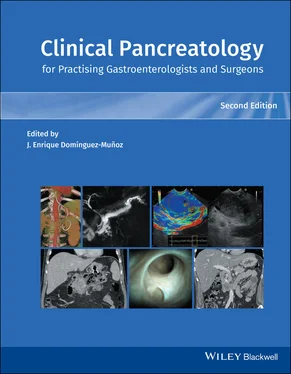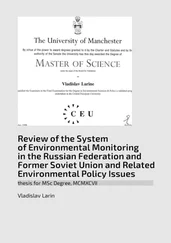b Chronic health conditions: cirrhosis with portal hypertension, New York Heart Association class IV heart failure, chronic respiratory failure, dialysis‐dependent renal failure, or immunocompromised state.
AST, aspartate aminotransferase; AUC, area under the response curve; BMI, body mass index; BUN, blood urea nitrogen; CRP, C‐reactive protein; GCS, Glasgow Coma Scale; LDH, lactate dehydrogenase; MAP, mean arterial pressure; WBC, white blood cell count.
While these parameters are readily available predictors of severity, they have limitations. BUN level is also a function of a patient’s muscle mass and it decreases with age. Additionally, it is elevated at baseline in patients with chronic kidney disease. Hematocrit is affected by anemia and age, so it is not a reliable marker in such populations. Nevertheless, their simplicity and strong association with necrosis and mortality led to studies examining the impact of lowering BUN and hemodilution on AP outcomes, with mixed results [35–37].
Interestingly, existing fluid resuscitation studies failed to convincingly show that lowering BUN and hematocrit improved outcomes [38]. This could suggest that hemoconcentration and BUN elevation may simply indicate the severity of disease that has already occurred rather than being early markers, and they unfortunately do not represent a targetable end point for volume resuscitation. Additionally, intravascular volume deficit is ultimate result of complex pathophysiological events such as capillary leakage, systemic inflammation, and vascular shunting. This highlights the need for a more sensitive and specific biomarker that can detect intravascular volume deficit at the earliest stage. While novel noninvasive tools have been developed to dynamically measure volume deficit in other clinical settings, none have been extrapolated for use in AP patients [39,40].
Fluid sequestration and intra‐abdominal hypertension are other important phenomena relative to AP severity. Patients often have systemic capillary leak syndrome leading to severe “third‐spacing” of fluids. Age under 40 years, alcohol etiology, hemoconcentration, and presence of SIRS are risk factors for fluid sequestration and predicted severity of AP [41,42]. Aggressive fluid resuscitation in this population will eventually lead to intra‐abdominal hypertension and compartment syndrome, which portends a poor prognosis [43]. As such, intra‐abdominal pressure as measured via a urinary catheter has been examined as a predictor of severity with promising results [44]. At a biomarker level, angiopoietin‐2, a regulator of capillary permeability, has been shown to predict severe pancreatitis [45,46].
Starting with acinar cell injury by a variety of pancreatic toxins, systemic inflammation occurs as early as the first few hours of the inciting parenchymal injury [15]. SIRS is a clinically evident syndrome that is a manifestation of the host’s exaggerated immune response to a local organ injury. SIRS secondary to sterile pancreatic inflammation is the predominant event in the first two weeks and its severity and progression to organ failure determines the fate of patients [2]. SIRS has long been recognized as a harbinger of disease severity. Several studies have shown that SIRS, especially when persistent for 48 hours or longer, is associated with increased risk of mortality [23].
At a biomarker level, white blood cell count, CRP, procalcitonin, and a variety of proinflammatory cytokines have been incorporated into different prediction models [47–51]. None of the cytokines, chemokines, damaged associated molecular pattern levels, or adipokines are routinely available for use. As such, a widely available acute‐phase reactant, CRP at levels above 20 mg/dl, is a commonly used inclusion criterion for studies examining predicted severe pancreatitis [20,21]. Leukocytosis is a criterion included in the SIRS criteria, Imrie score, and Acute Physiology, Age, and Chronic Health Evaluation (APACHE)‐II score. Procalcitonin has repeatedly been shown to be associated with infected necrosis and organ failure [52–54]. IL‐6 is a potent proinflammatory cytokine and is the most extensively studied cytokine with a strong association with severe pancreatitis with good accuracy ( Table 4.2). TNF‐α is another potent proinflammatory cytokine but due to the inaccuracies inherent in its measurement, studies examining TNF‐α as a predictor of severity are scarce [65].
Host‐related Characteristics
Age and Comorbidity Burden
Increased age and comorbid conditions do not mediate increased pancreatitis severity, but rather reduce a patient’s reserve to survive an extreme physiological stress [19]. Patients older than 75 years of age are at significantly increased risk of mortality at one and three months when compared with patients 35 years of age and younger. Similarly, a high Charlson Comorbidity Index is associated with increased mortality. While comorbidity burden is not typically included in a scoring system, age is part of most scoring systems (see Table 4.1).
Obesity and Hypertriglyceridemia
Obesity has long been recognized to be a risk factor for pancreatic necrosis, organ failure, and mortality but its precise mediatory mechanism remained elusive until recently [66,67]. The differential significance of visceral, intrapancreatic and peripancreatic distribution of fat has been illustrated in multiple studies [68,69]. Lipolysis of triglycerides contained within and around the pancreatic parenchymal adipose tissue releases unsaturated free fatty acids that mediate end‐organ injury by causing mitochondrial failure [67,69,70]. Body mass index (BMI) has been incorporated into existing prediction systems such as APACHE‐II scores, with modest performance improvement [71]. Free fatty acids also bind to calcium, which explains the decreased calcium level often seen during severe necrotizing pancreatitis, and calcium level is part of existing scoring systems such as Ranson’s. Similar mechanisms likely explain why hypertriglyceridemic patients are at increased risk of developing severe pancreatitis [72].
Table 4.2 Cytokines, chemokines, and adipokines examined in studies for prediction of severe pancreatitis or mortality.
| Name of cytokine, chemokine or adipokine |
Function |
AUC for severe pancreatitis or mortality |
| Interleukin‐1β |
Proinflammatory cytokine: stimulates macrophages, causes lymphocyte maturation; induces acute‐phase protein production; facilitates leukocyte trafficking |
74–82% [55] |
| Interleukin‐6 |
Proinflammatory cytokine: regulates T lymphocytes activation and differentiation, causes lymphocyte maturation; induces acute‐phase protein production; facilitates neutrophil trafficking to the site of injury; strongly associated with acute lung injury in acute pancreatitis |
75–88% [55–57] |
| Interleukin‐8 |
Proinflammatory cytokine |
73–76% [55,57] |
| TNF‐α |
Proinflammatory cytokine: induces acute‐phase protein production; activates neutrophils and macrophages |
81% [58] |
| Angiopoietin‐2 |
Autocrine peptide regulator of vascular permeability |
74–81% [46,59] |
| Resistin |
Adipokine: induces production of IL‐1β, IL‐6 and TNF‐α |
76–80% [60,61] |
| Visfatin |
Adipokine: induces production of IL‐1β, IL‐6 and TNF‐α |
74% [62,63] |
| Monocyte chemotactic protein‐1 |
Chemokine secreted early in the disease course to recruit monocytes, lymphocytes, mast cells, and eosinophils |
88% [64] |
Degree of Parenchymal and Extra‐parenchymal Injury
Читать дальше












